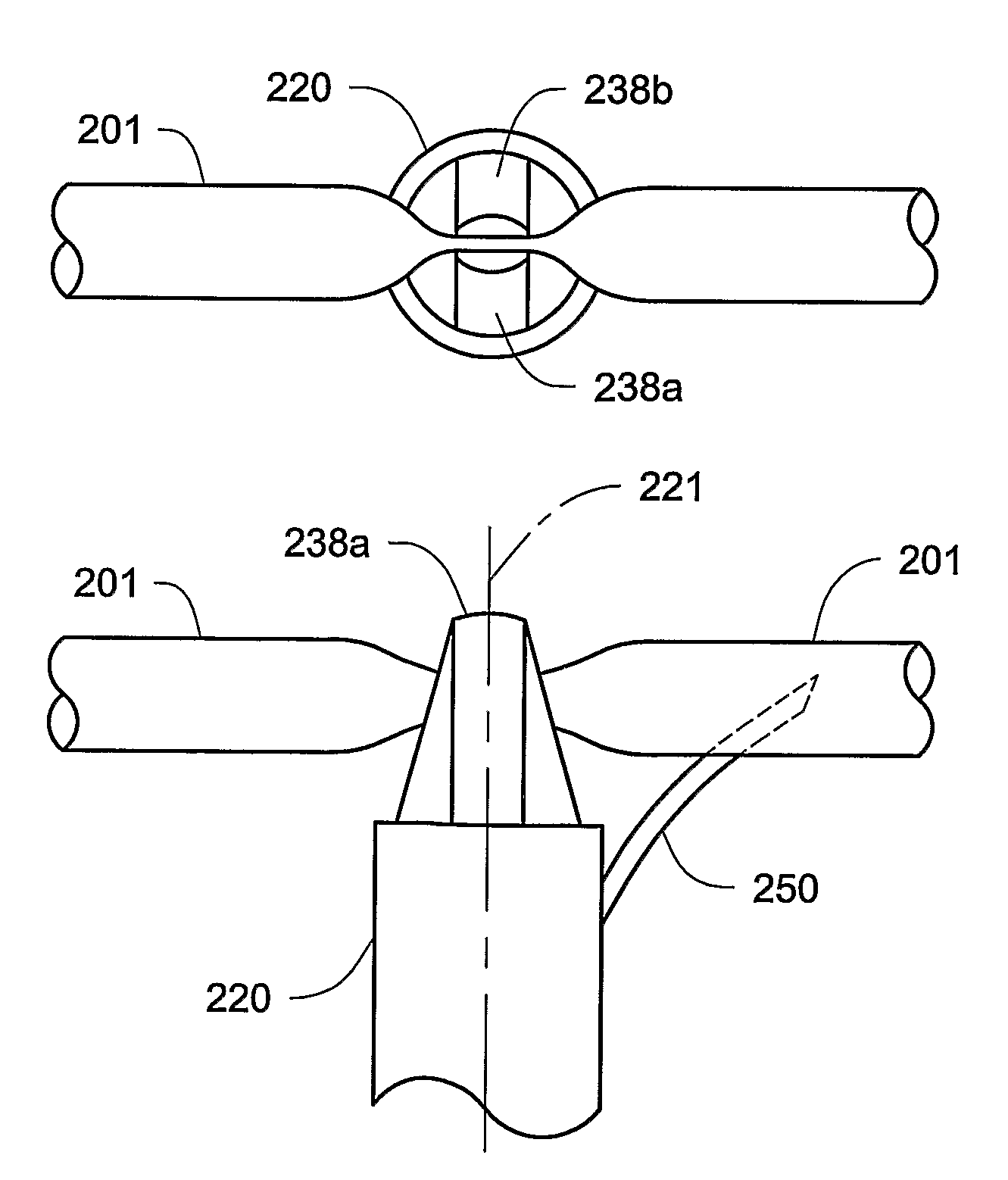Vein closure and injection kits and methods
a technology which is applied in the field of vein closure and injection kit and methods, can solve the problems of incompetence of saphenopopliteal junction, venous abnormalities, and unfavorable patient safety, and achieve the effects of reducing instrumentation costs, reducing the risk of intraluminal complications, and reducing the risk of deep vein thrombosis and recanalization
- Summary
- Abstract
- Description
- Claims
- Application Information
AI Technical Summary
Benefits of technology
Problems solved by technology
Method used
Image
Examples
Embodiment Construction
[0028]In the following description of some exemplary embodiments of the invention, reference is made to the accompanying figures which form a part hereof, and in which are shown, by way of illustration, specific embodiments in which the invention may be practiced. It is to be understood that other embodiments may be utilized and structural changes may be made without departing from the scope of the present invention.
[0029]The present invention provides a unique approach to the treatment of venous junction incompetence, involving extraluminal endoscopic venous junction closure. The closure is combined with simultaneous retrograde sclerotherapy which accomplishes treatment of the distal incompetent saphenous vein. Because venous junction closure preferably precedes the sclerotherapy of the distal saphenous vein, the risks of deep venous thrombosis and recanalization may be reduced.
[0030]It may be preferred that the vein closure and sclerotherapy be performed with the aid of an imaging...
PUM
 Login to View More
Login to View More Abstract
Description
Claims
Application Information
 Login to View More
Login to View More - R&D
- Intellectual Property
- Life Sciences
- Materials
- Tech Scout
- Unparalleled Data Quality
- Higher Quality Content
- 60% Fewer Hallucinations
Browse by: Latest US Patents, China's latest patents, Technical Efficacy Thesaurus, Application Domain, Technology Topic, Popular Technical Reports.
© 2025 PatSnap. All rights reserved.Legal|Privacy policy|Modern Slavery Act Transparency Statement|Sitemap|About US| Contact US: help@patsnap.com



